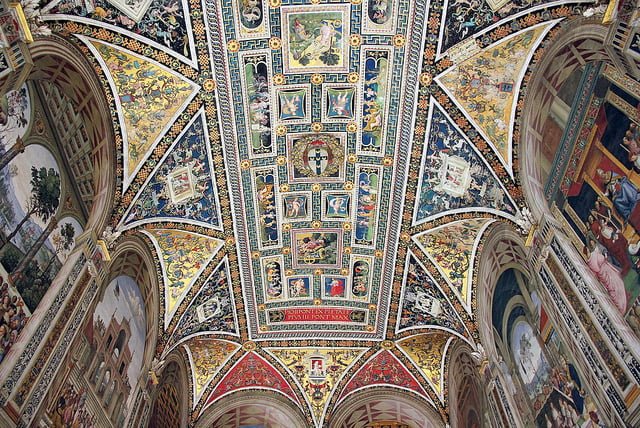The Piccolomini Library was painted by the Perugian painter Pintoricchio (Bernardino di Betto) in 1502 for his patron, the cardinal of Siena, who wished to honour his uncle Pope Pius II who died in 1464. (The unfortunate cardinal Francesco eventually got promoted to the Papacy and died 10 days later!) Pope Enea Silvio Piccolomini was one of the greatest humanist scholars and the library in Siena was built to house his precious collection of illuminated manuscripts. The frescoes in the large lunettes that line the walls tell the story of the Pope’s life, while the surrounding decorative elements and ceiling are in the “grotesque” style that imitates ancient Roman examples that were very popular with artists and humanists at the time.
When you visit the Piccolomini Library, don’t try to understand exactly what’s going on in the frescoes, because it’s part of a secular story that you’re unlikely to know. What you do need to know is that it depicts a mythologized and glorified version of the life of the Pope, so look for the same guy in each scene. It starts at the far end on the right wall with a young boy, and you see this character growing older and always further up in the ecclesiastical ranks as you continue your way through the paintings. I heard a talk by an acquaintance about the role of gesture in this fresco cycle, from which I learned that there is often a figure helping us by pointing to the action; the gesture or hand motions of the protagonist are also important in communicating the moment of the story, such as acceptance of an honour or the giving of orders.












